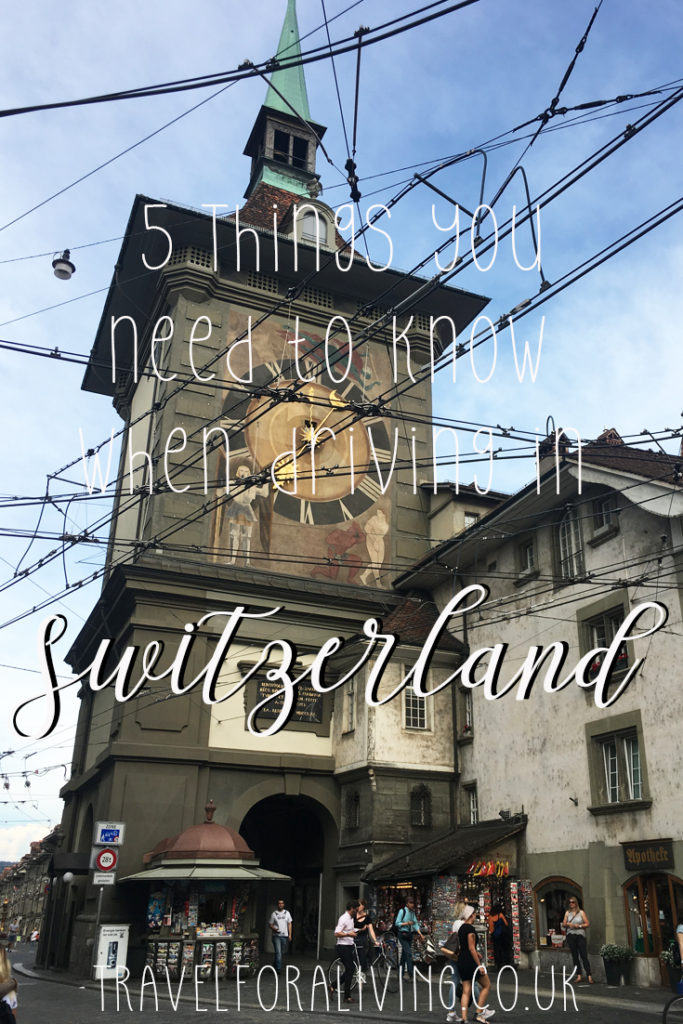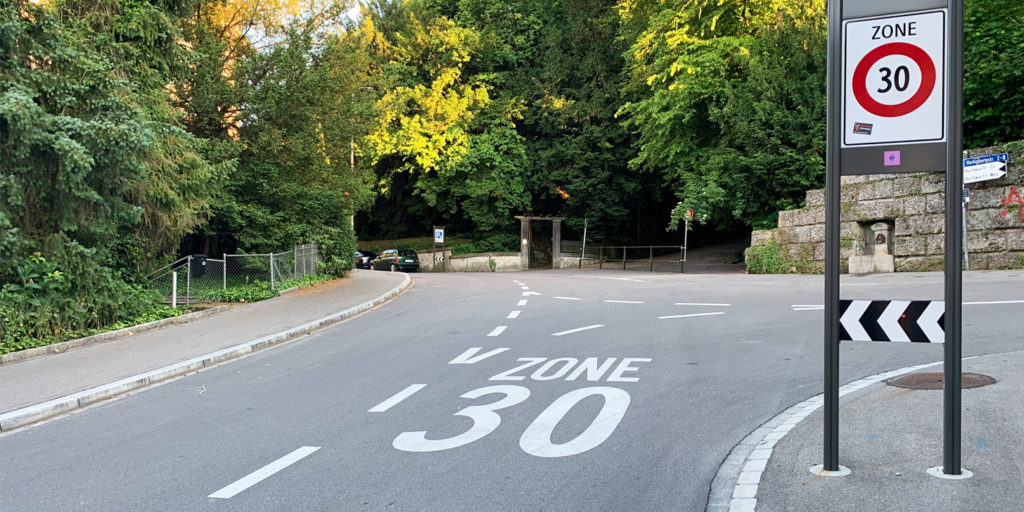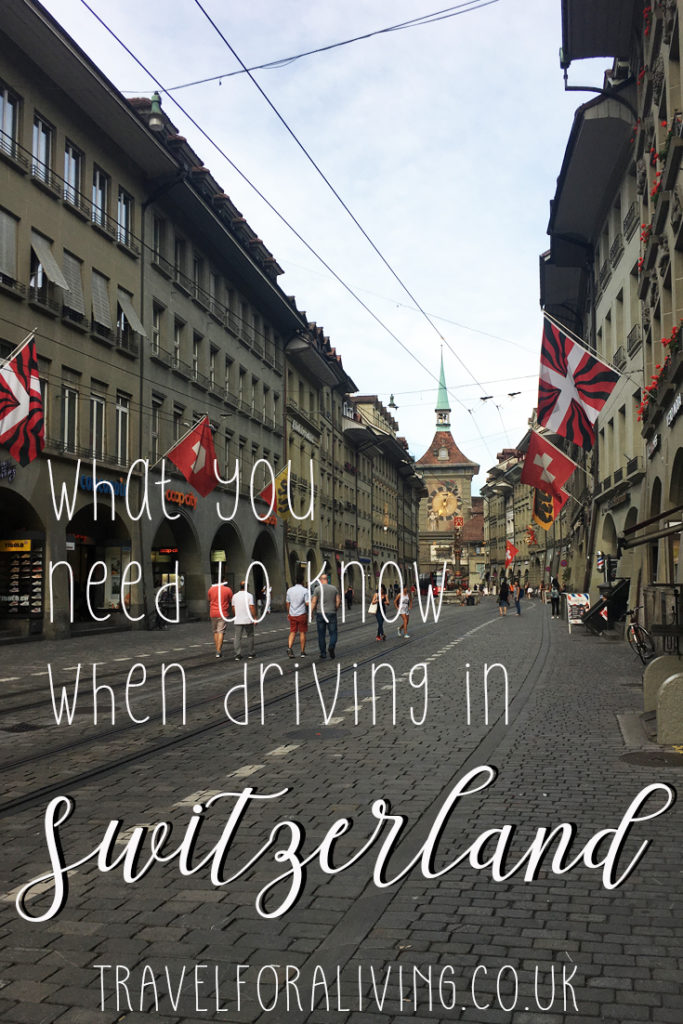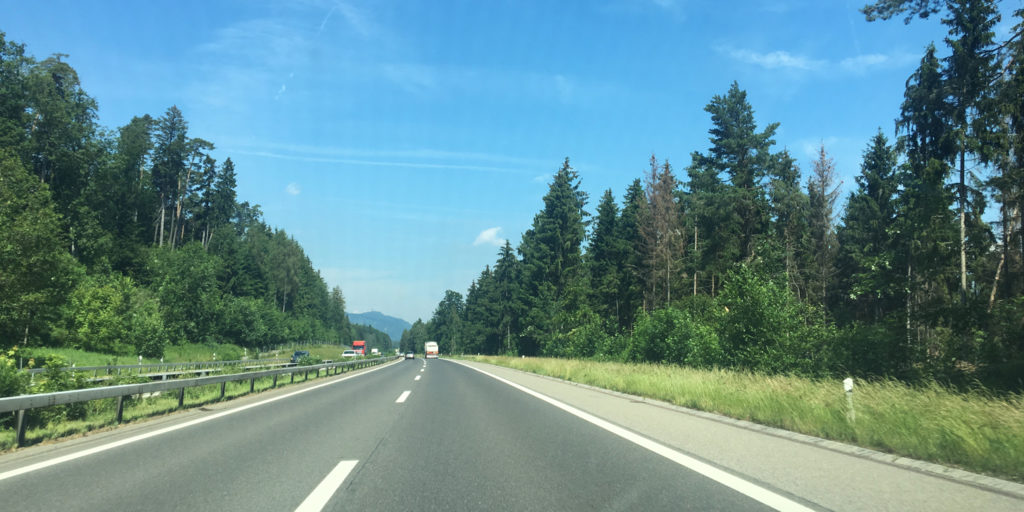As I just spent two days travelling the length and width of Switzerland by car, I noticed that a few things are rather different. And I am not referring to the most obvious compared to the UK. Yes, Switzerland drives on the right side of the road. But so does the rest of Europe and I am used to that. It is more the subtle differences that set Switzerland apart from its neighbouring countries. Therefore, should you be heading to the Alpes soon, let me tell you all you need to know about driving in Switzerland.
I am not claiming that this is a concise guide on driving in Switzerland. I am not even claiming that I am covering every single thing here. Or that it would stand up in court, so don’t use me as your only source, reliable or otherwise. All I am intending to do here, is share a few of my observations. To make things a little easier for you, should you prepare for a road trip through Switzerland and absolute need to know the basics of driving in Switzerland.
Growing up in Germany, Switzerland was one of our neighbouring countries. But other than driving through Switzerland to get to Italy, I hardly ever visited. Truth to be told, the only time I ever went to Switzerland during my childhood was a one-week skiing trip with school. And since I sprained my ankle the first day of skiing, that isn’t the best childhood memory I can come up with.
So, when I started visiting car dealerships a while back, I was quite excited to finally get to see some bits of Switzerland (like visiting Bern for example). But until this most recent trip, I was always picked up and driven around (or relied on public transport to move between cities). But since I had to visit a bunch of dealers in a rather short time and was out and about on my own, having a rental car was a necessity this time. Which is what prompted this post. So enough of the chitchat, let’s get started.

Things you need to know about driving in Switzerland: Road charge
If you rent a car in Switzerland, you don’t need to worry about this one (as it will be taken care of by the rental company). But if you are planning on heading to Switzerland with your own car, it is vital that you are aware of the road charge in Switzerland. If you want to use the Swiss Autobahn (motorway) or Autostrasse (express way), you will need to display a valid road charge sticker in your front windshield. The ‘Vignette’ is valid for an entire year (well 14 months actually from 1stDecember the previous year until 31stJanuary the following year). The Swiss vignette currently costs 40 Swiss Francs (36.50 Euro / 32 GBP). It makes no difference whether you only cross Switzerland once on your way to Italy or drive in Switzerland for the entire year: The moment you want to drive on one of those national roads, you will have to buy and display a vignette.
Where do I buy a vignette to drive in Switzerland, I hear you ask? That is easy. You can order the vignette in advance from abroad. Or you can buy a vignette at the Swiss border (just don’t forget it. Being caught without a vignette will cost you).
And to avoid any confusion, let me also tell you how to identify Swiss roads with road charges. Their road signs are green. Not rocket science (once you know it).
Essentials you need to know about driving in Switzerland: Speed limits
OK, if you are used to driving in the UK or US, you certainly are no stranger to speed limits. But since these vary from country to country, here a quick run-down on the speed limits in Switzerland.
Obviously, these speed limits only apply if no other restriction is in place.
| Within town | 50 km/h | Approx. 30 mph |
| Out of town | 80 km/h | Approx. 50 mph |
| Autostrasse (Express way) | 100 km/h | Approx. 62 mph |
| Autobahn (motorway) | 120 km/h | Approx. 75 mph |
Whilst not everyone might stick to the speed limit at all times, there are quite a few speed cameras around (bad news fellow UK drivers. Switzerland does not put up warning signs telling you that there is a camera ahead). And speeding fines in Switzerland are some of the most expensive ones around. Totally not worth it. Just as an example: Driving 150 km/h on the motorway (which in Germany would be a fairly normal thing to do) will cost you in the excess of 400 CHF (a whopping 320 GBP). And even just going over the limit by 10 km/h in town can cost you around 100 GBP. So just don’t. Stick to the speed limit, as annoying as it might seem. On the upside, driving through Switzerland at a rather slow speed gives you plenty of time to ooh and ah at the picturesque landscapes, idyllic villages, snow-capped mountains and cows beside the road (did I miss any Switzerland cliché here? Hope not).
What you need to know about driving in Switzerland: Driving in Winter
My Switzerland road trip was in June, so I didn’t have to worry too much about driving in Switzerland in winter. In fact, the weather was hot and sunny, so the most important driving accessories were my sunglasses and the aircon. But let me tell you a big big secret. Switzerland has snow in winter. And loads of it (sometimes). You know, all those snow-capped mountains you associate with Switzerland? Yep, they come with real snow and ice when you want to drive through them.
And snow is something most of us Brits really struggle with. At least when in London. Maybe we miraculously grow the ability to drive in snow and ice when going abroad. But just in case we don’t (or you are visiting Switzerland from somewhere other than the UK), here are a few words of advice on driving in Switzerland in winter.
Despite common believe, winter tyres are not mandatory. BUT that doesn’t mean you can drive in Switzerland in winter with your normal summer tyres. The rule says that you need to be in full control of your vehicle at all times. So, whilst winter tyres might not be mandatory, in snow and ice you simply cannot control your car on summer tyres. And therefore, you are not allowed to drive with them. So, either you park your car by the side of the road and wait for snow melt to set in. Or you ensure your tyres are up for the job. Again, if you book a rental car in Switzerland, this shouldn’t be a worry for you, as I would expect those to come with the correct tyres. But if you drive through Switzerland with your own car (or cross the border from Italy or Germany with a rental car), this is something you should be aware of.
Also, certain mountain passes might require snow chains. If they do, signs will make you aware of that.
Things you need to know when driving in Switzerland: Right before left
A rule that is quite common in Germany, but for example completely unheard of in the UK (and not only because they on the other side of the road and therefore it would be left before right).
Unless otherwise indicated by signs, traffic coming from the right will have priority over traffic coming from the left. But whilst in Germany this is the case whenever there aren’t any road markings or road signs at all, in Switzerland I stumbled across rather unusual road markings that I had never seen before. And that puzzled a little.

At first, I mistook them for an indication that I would have to turn right and couldn’t go straight. But that only lasted a split second. Then it became clear that this road marking meant that if I were to go straight ahead, I would need to give priority to the traffic from the right. In a way it is the same as the four lines in the UK when approaching a junction. Just drawn in a more dynamic way really.
Other things you need to know when driving in Switzerland
When driving in Switzerland, your headlamps should be on at all time, even during the day.
You will have to carry a first aid kit in your car, as well as a warning triangle. The latter must be within reach at all times. So, keeping it in your boot might not be the smartest idea ever.
Whilst it isn’t mandatory to carry a high-vis jacket with you, it certainly is advisable (and since it is mandatory in a few other European countries it might be best to carry one with you anyway).
I hope I’ve covered everything you need to know about driving in Switzerland. And I haven’t put you off visiting Switzerland. It might sound a lot but driving in Switzerland isn’t really this difficult or different from driving elsewhere in Europe.
Tell me, any more words of wisdom? Any weird road signs I might have missed?



Vanessa Shields
Such great tips on driving in Switzerland especially about the road charge and speed limits. It’s helpful to have this info ahead of time!
Lyne
Very informative post! I didn’t know you had to carry a first aid kit with you, it’s good to know
Travel for a living
Same in Germany for example. But not in the UK. But it sure doesn’t do any harm to carry one regardless. We still do, although we’ve lived in the UK for a very long time.
Andi
I worked in Switzerland for 3 years and drove to work M-F except when the snow was really bad. It was safe and pretty easy to navigate and I loved my commute near along the mountains and the lake! Your tips are spot on! One quirk that I found amusing was if you live in Switzerland you have to have weasel insurance as part of your car insurance – it is a little animal that gets into your car wires and causes havoc! At least that was the case when I was there, which has now been more than 10 years!